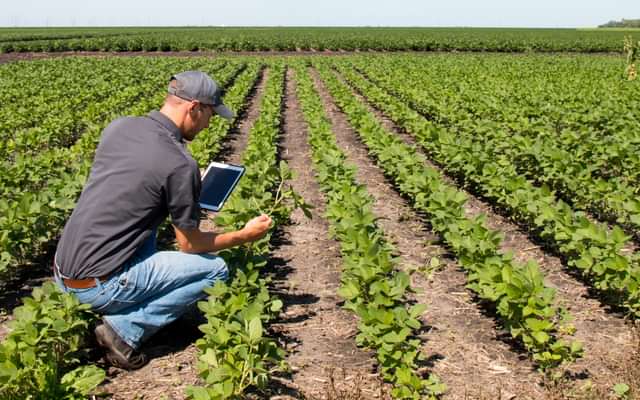How the U.S. Ag Industry is Truly Growing a Climate for Tomorrow

For 50 years, National Ag Day has recognized and celebrated the contribution of agriculture in our everyday lives. And for the past two years, it has focused those efforts around the theme of Growing a Climate for Tomorrow.
You may be asking yourself: What does that mean? How is our nation’s ag industry Growing a Climate for Tomorrow? Why should I care?
Agriculture truly impacts us all. Yes, it provides the food you eat and the clothes you wear. But it also supports local communities, drives our global economy, creates new careers and so much more. That is why everyone in agriculture – from the farmers in the fields to the data scientists driving innovation – continually work together to improve the industry. So we can all see a better tomorrow. This has been a goal for decades.
As an agri-marketing agency, Paulsen works alongside many amazing innovators in agriculture. We’d like to share some ways we personally see our nation’s ag industry Growing a Climate for Tomorrow.

Sustainability in agriculture
Part of Growing a Climate for Tomorrow is taking care of our natural resources today. That is something America’s farmers and ranchers have done for decades. Today, they continue to lead the way. In fact, the American Farm Bureau Federation reports that U.S. agriculture contributes just 10% to overall greenhouse gas emissions. That is far less than other major industries. They also play an active role enhancing and absorbing carbon.
Some sustainable practices farmers and ranchers use to protect our soil, water and air include:
- Planting cover crops
- Grazing livestock rotationally
- Using crop rotation
- Conservation tillage like no-till or strip-till
The use of fertilizer has also dramatically decreased. Today, America’s farmers use about 50% less fertilizer to produce a bushel of corn, wheat or soybeans than they did in 1980.
Sustainable farming helps care for the world we all call home. It also ensures that the next generation of farmers and ranchers have the resources they need for raising crops and livestock for a growing world population.

The impact of science and technology
Thanks to innovation and technology, today’s farmers can do more with less. According to Farm Bureau, U.S. agriculture would have needed nearly 100 million more acres 30 years ago to match today’s production levels.
One thing helping farmers greatly improve their efficiency is precision ag. Today’s farm equipment comes with software, GPS, sensors and mapping software. This advanced technology helps farmers optimize every acre.
Automation is also here. We have seen the introduction of robotic milking, automated feeding systems, auto-driving tractors, crop-scouting drones, automated irrigation, see-and-spray weed systems and more.
Thanks to science, we have also seen seed genetics improve. Using things like genetic engineering and genome sequencing, scientists can create seed that is more resilient and adapted to specific growing conditions. This allows farmers to produce higher yields.

Using agricultural products in new ways
Throughout the years we have seen the innovative use of agricultural commodities. For example, biofuels. Corn and soybeans are used to create an alternative to fossil fuels, reducing our carbon footprint and helping move transportation fuels toward net zero emissions. Plus, corn is now being used to make sustainable aviation fuel.
Some other creative uses include:
- Plant-based plastics (made from things like corn and sugarcane) are an environmentally friendly alternative to traditional plastic.
- Animal feed from corn stalks and soy meal help reduce food waste and increase ag sustainability.
- Various new uses for soybeans including soy-based crayons, shoes, tires and turf.
- Renewable energy created via methane digesters. These systems turn cow manure into renewable natural gas.
In fact, farms and ranches already embrace a variety of clean energy sources. Farm Bureau reports that in the last five years, farmers and ranchers have put in 132% more renewable energy sources including geothermal, solar, panels, windmills, hydro systems and methane digesters.
Impacts off the farm
These changes to agricultural production are driving careers beyond farming. According to the USDA, 21.1 million jobs in the U.S. in 2021 were related to agriculture and food. But only 1.3% of those jobs were direct on-farm employment.
And as agriculture evolves, so do the careers around it. There are careers related to agriculture today that did not exist 15 to 20 years ago. Some of those jobs include:
- Precision ag specialist
- Software engineering and IT
- Data scientist and data analyst
- Urban farming, vertical farming and hydroponic farming
As the ag industry continues to evolve and face new challenges, it is likely new career opportunities will keep emerging.
So there you have it! Our ag industry is doing amazing things that are truly Growing a Climate for Tomorrow. From sustainable farming practices to cutting-edge technology, agriculture is constantly evolving and making a positive impact on our world. Now that’s a reason to celebrate!